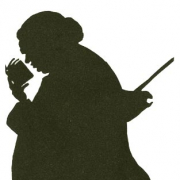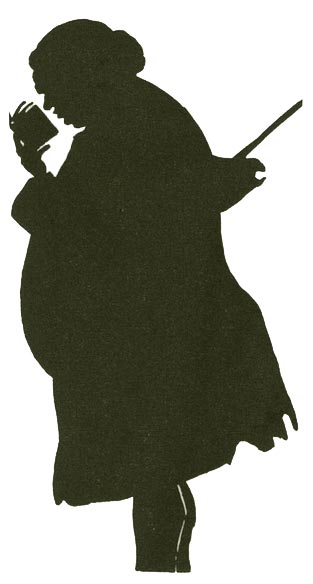MONTHLY BLOG 154, IN PRAISE OF (JUDICIOUS) REGULATION
If citing, please kindly acknowledge copyright © Penelope J. Corfield (2023)

|
Image 1: |
Humans are wondrously inventive. It’s the cultural trademark of the species. Simultaneously, however, humans are also reflective creatures. They eventually realise – with greater or less reluctance – that their inventions and innovations need good framework regulations to operate successfully. Unless the impact of significant change remains fully monitored, there is always a risk that creative inventions may help in one direction but may simultaneously cause unintended collateral damage in another.
Think of the motor car. Freedom on four wheels – for those who have their hands on the wheel. Immensely exciting. Yet … there are other people on the roads. Initially, in towns, the exciting new motor cars were each preceded by a walker, carrying a flag. Hardly the romance of the open road.
It quickly became apparent that the new vehicles could kill and main. In August 1896, for example, one Mrs Bridget Driscoll from Croydon received fatal injuries when she was struck by a slow-moving car which was giving demonstration rides at Crystal Palace, London (UK).1 And the drivers were themselves at risk. A wall plaque at Harrow-on-the-Hill records that fact, under the blunt heading ‘TAKE HEED’. It marks the location of the first recorded car accident in Britain (in 1899) that was fatal to the driver.2
Now, over one hundred and twenty years later, there are billions of motorised vehicles in all corners of the globe. And there are ample regulations and ‘rules of the road’.
In many (though not all) streets, pedestrian walkways are demarcated from driving areas. There are rules about which side of the road drivers should use. There are markings to designate traffic lanes. There are parking regulations; and, in places, local road taxes. There are traffic lights to regulate traffic flows at major junctions. At key places, there are also special pedestrian crossings. There are speed limits (if not always honoured). In many countries, too, there are rules about the wearing of seat belts. Further regulations require drivers to pass an official test, before being licensed to drive. (Beginners in Britain have to display the letter L for ‘Learner’ on their cars). All vehicles meanwhile need to be tested annually for road-worthiness; and to be fully insured against accidents.
Collectively, the aim is to obviate dangerous driving and to safeguard all road users. In Britain, the emergent ‘rules of the road’ were codified in 1931 as The Highway Code. It applies to all individuals using the roads, whether on foot, on horseback, or on wheels.3 Other countries produced their own versions. And in 1968, these variegated rules were codified into an international standard. Known as the Vienna Convention of Road Traffic, it is designed to facilitate international road traffic.4 Not all countries have ratified the treaty which confirmed its regulations. But the long-term pressures, arising from increasing cross-border traffic, make it unlikely that individual countries will be able to stand aloof from the international consensus.
At every stage in the evolution of these regulations, there have been arguments – often heated ones. Rival calls for ‘freedom’ and for ‘communal safeguards’ have been issued, often with intense passion. Currently, the same arguments are being canvassed with reference to urgent campaigns to reduce noxious carbon emissions, especially in large and heavily trafficked cities. As yet, there is no consensus; but it is not hard to predict that the unfolding climate crisis will hand eventual victory to the regulators – and, hopefully soon at that!
All these outcomes are far from the stately steps of the first flag-bearers, who walked in front of the first motor cars. But the undeniable need for community standards was apparent from the start. Imagine today’s 1.49 billion motor vehicles at large, without any regulation whatsoever. There would be total global grid-lock. And the first to call for properly enforced rules of the road would be the global billions of drivers.
So what follows? Mass human living depends upon proper regulation of all manner of things. From the safe building of houses, schools, bridges, and roads; to the safe storage of nuclear waste; to the efficient removal and treatment of human bodily waste.
Rather than arguing abstractly about the pros and cons of ‘freedom’ versus ‘regulation’, it’s much more productive to consider instead the key principles that should underpin judicious and appropriate community regulation.
Here then are five key principles:
(1) It’s essential that the need for regulations should be clearly explained and understood by a good majority of the adults within any community.
(2) It’s also vital that regulations are set and supervised by disinterested parties, whose identity is known and on the record. Self-regulation quickly becomes slack and ineffectual’; and can degenerate into criminal negligence.
(3) It’s also important that regulation is undertaken intelligently with a good sense of the overall objectives, so that rules are clearly comprehensible and manageable. Rules that appear to constitute nothing more than nit-picking and obstructive ‘red tape’ are liable to be held in contempt and evaded.
(4) It’s equally essential that the reporting of regulatory scrutiny and assessment is undertaken with scrupulous fairness – and the outcomes conveyed to interested parties with empathy and care. It may be that criminal prosecutions will follow in some specific circumstances; but regulation and assessment is a social and communal art, not primarily a legal process.
(5) Regulators always need reasonable security and independence in their role, so that they cannot be influenced in a partisan manner – or dismissed on a whim. Yet, simultaneously, they themselves should be regularly reviewed and their authority regularly renewed. Thus it should always be known to whom regulators are answerable: whether to local, national or international authorities.
Lastly, is there a better term for ‘regulation’? It can seem, at best, to be merely petty. Or, at worst, to be intrusive and meddling. After all, most people have broken minor rules on one occasion or another. Drivers sometimes exceed the specified speed limit. Pedestrians at times cross roads when the pedestrian lights signal ‘WAIT’. Even the most law-abiding citizens can be occasional rule-breakers on a minor scale. But that’s not really the point.
The key need is for a known framework of collective standards, which are set, monitored, and updated communally. In that way, human creativity and invention can flourish, without back-firing. Community standards with mass endorsement can obviate chaos. These tasks require debate, negotiation, clear-eyed realism, goodwill – and optimism. All excellent qualities! Onwards!
ENDNOTES:
1 Guinness World Records: https://www.guinnessworldrecords.com/world-records/first-person-killed-by-a-car (viewed 20 Sept. 2023).
2 H. Turner, ‘The Story of Britain’s First Fatal Car Crash’ (2016): in https://harrowonline.org/2016/04/13/the-story-of-britains-first-fatal-car-crash-harrow-1899/ (viewed 20 Sept. 2023).
3 A preliminary booklet was introduced in 1921, following discussions between the police and the Automobile Association (founded 1905). In 1931, the rules were standardised as the Highway Code, and issued by the government: see https://en.wikipedia.org/wiki/The_Highway_Code (viewed 20 Sept. 2023).
4 https://en.wikipedia.org/wiki/Vienna_Convention_on_Road_Traffic (viewed 20 Sept. 2023).
For further discussion, see Twitter
To read other discussion-points, please click here
To download Monthly Blog 154 please click here



